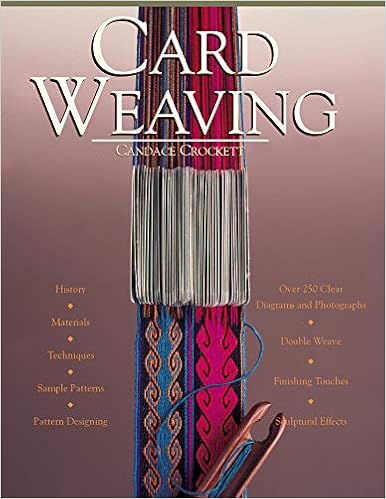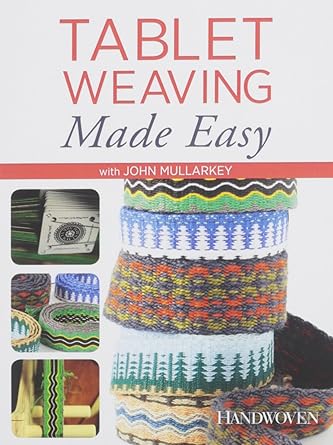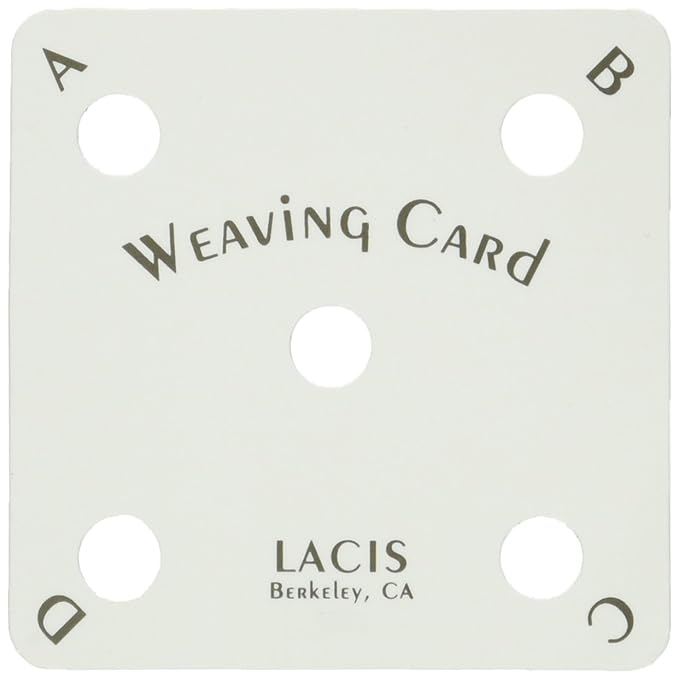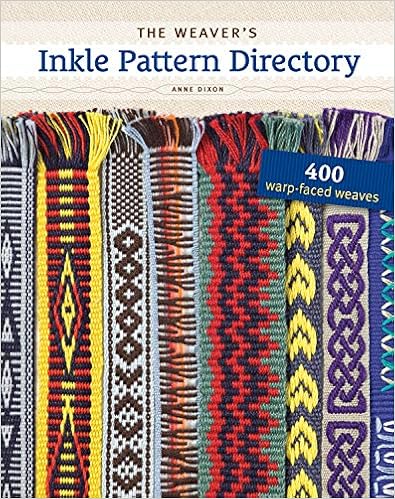
After attending the Holiday Folk Fair in Milwaukee last November (as we do most years), I was once again fascinated with the woven belts many of the dancers wear. Woven belts that were very likely done on an inkle loom.
So that's what I asked my DH to make me for Christmas. We found some plans on the internet (This one is very similar to the Schacht Inkle Loom.), and he disappeared into the basement to pick out some wood, and set to work on it ... Mostly made from wood already in his stash. He did buy some of the hardware. The tension rod (closest to the foreground) is cot off from a recycled shovel handle. It's bigger than the other dowels
BOOKS
I also ILL-ed the classic Peter Collingwood reference on the subject. It covers everything, but is really more of an academic treatment. It would be more useful if I already knew what I was doing with this technique. So I returned it, knowing it was far too advanced for me at this point. I may return to it some day ... For now, the Candace Crockett book above is enough.
I did purchase this book as a good reference to keep on hand. It covers the basics, along with more advanced patterns and techniques. An inkle loom is not required for card weaving, but it is the structure that holds the warp without other means, such as a belt. Be aware that his book is not specific to inkle looms.
I also got this one from my local public library, but it seems like a much more advanced book than for where I'm at at present. I may revisit it later. She also uses a different method -- more like a rigid heddle or pick-up method. My little brain wasn't ready to do the required translating for cards.
Tablet Weaving Made Easy with John Mullarkey DVD - ILLed through my local public library. I'd read about and seen the set-up for card weaving, but I just could not picture it in motion. What were they really doing with those cards? Now I get it! It's really quite simple and ingenious! He does use an inkle loom.
SHUTTLES
HandyWoman on Etsy makes hand-made and affordable weaving tools. I was able to order a variety of shuttles from her to let me get a feel for which style I might like / prefer. As with the larger looms, it may depend on the yarns I'd be using for any given project, which shuttle would work best.
I bought 2 of these smaller curved shuttles -- one maple and one cherry. They are very thin and light, but still sturdy. Nice finish on them, too. One edge is sharper than the other, which is designed to act as a beater, or to push the new weft yarns into place.
The next two 2 inkle shuttles take bobbins.
The first one one is more like a regular boat shuttle, in miniature. It's really lovely in cherry--and light. And she sent a glass bobbin to go with it.
The one on the bottom is a Lacis stick shuttle purchased on Amazon, along with the cards.
WEFT - YARNS AND THREADS
I picked up a variety of crochet threads at the local thrift store. I thought I'd start with these to practice with, before I invest in some more expensive Pearle cotton with a nice sheen. Red, white and black should be basic enough to start with. I can dye small quantities of the white to get other colors, too. Another video I saw said you could use a variegated yarn -- acrylics might be good to start with, just to get the hang of the basics, and will give a nice patterned effect for an otherwise plain weave. Otherwise, once you get into specific patterns, you'd want to stick with single color strands, so that you can control the pattern.
I am also planning to use the box of embroidery floss I was gifted a few years ago.
I think I can also use some of the Rayon slub, leftover from a recent weaving project.
PATTERNS
Weaving on an inkle loom is an ancient craft, literally. There are lots of patterns in the public domain, and freely available on the internet. Try Pinterest ...
I picked up this card weaving pattern book as a reference. The cards let you do more complicated patterns, but they are not necessary if you just want to do some simple plain weave patterns. I was already familiar with Anne Dixon, as she published other books for hand weaving.
Plus -- one of the Amazon reviews for this book was rather amusing, by Paul Morse:
Now to choose a pattern and start playing with it!
Here are a couple of videos showing how to set it up. The loom my husband built for me is very similar to this one by Schacht.
I know what you're thinking -- Another loom? Another hobby?
This one is infinitely more portable than my Kessenich floor loom! I was also attracted to the idea of smaller projects that could be finished sooner.
What can you use those woven bands for?
Remember a couple years ago at Quilt Camp, when one of the ladies had a pretty woven blue trim on the ankle cuffs of her jeans? Trims and embellishments was one idea.
These woven belts are also very strong -- that's why ancient peoples used them for utilitarian and practical purposes, for belts and straps. You could use them for camera straps, or guitar straps, or straps for a bag / purse. Any place you'd use webbing or strapping. Lots of options! Shorter bits could be used for book markers, or key chains.
For further reference:
Inkle Weaving FAQs and Answers
Stay tuned to see how it all turns out!









No comments:
Post a Comment